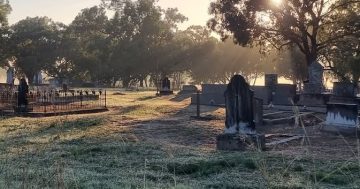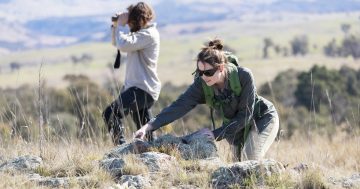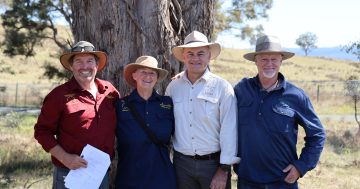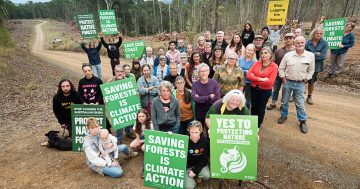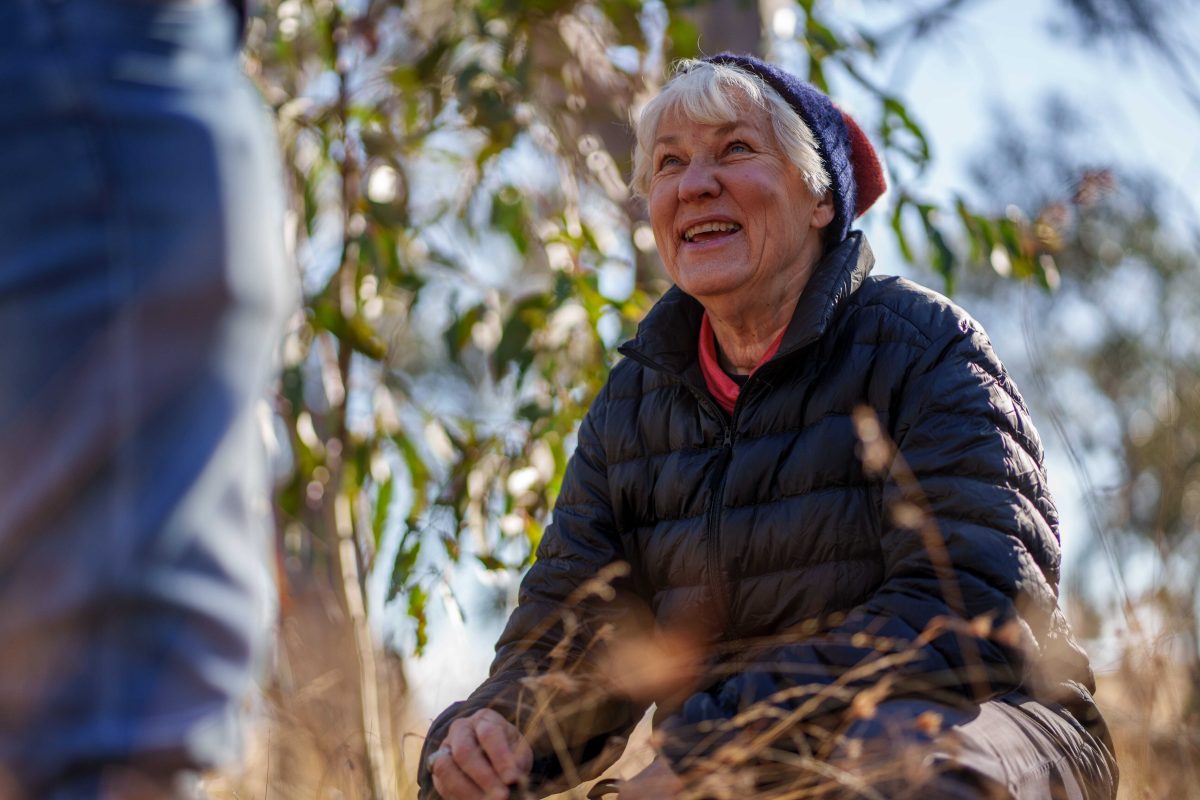
When you protect a plant, you protect everything in the community, says Beauredden property owner Barbara Evison. Photo: Colin Elphick/NSW Biodiversity Conservation Trust.
To stem the potential losses of Monaro’s snow gum woodlands and native grasslands, the NSW Biodiversity Conservation Trust (BCT) has recently signed conservation agreements with landholders to protect 4200 hectares of indigenous bushland.
As regional areas continue to develop and natural disasters become more frequent and unpredictable, the long-term future of indigenous bushland has come under greater threat. BCT’s southeast regional manager, Tobi Edmonds, says these wood and grasslands are now critically endangered.
“Land management practices have changed the composition and vitality of these areas, along with climate change as snow gum lands are attuned to cooler climates,” he says.
“They’re also more vulnerable to floods and fires as they’re not epicormic and struggle to regenerate. This is why we have worked only preventative bushfires into the agreement as intense ones are very damaging.”
According to BCT senior landholder support officer Adam Hook, these agreements secure habitat for threatened species like koalas, glossy black cockatoos and the speckled warbler, along with maintaining trees until they’re mature enough to develop hollows for tree-dwelling species. They also preserve culturally important spaces of the Ngarigo people, such as the pathways that have linked surrounding nations for thousands of years.
In the past few years, landholders have been invited to request protection for parts of their property with these flora on a permanent or fixed-term basis. Over three tender rounds, 89 landholders expressed their interest, and BCT staff assessed 38 sites that met the appropriate conditions for the agreement.
Following the assessment, BCT sent a draft management plan to each landholder. If they decided to proceed, the landholders sent BCT a bid for how much they would like to be paid every year for each hectare protected. In total, 17 were sent an agreement, and of the eight who accepted, two were for a fixed term and six were in perpetuity.
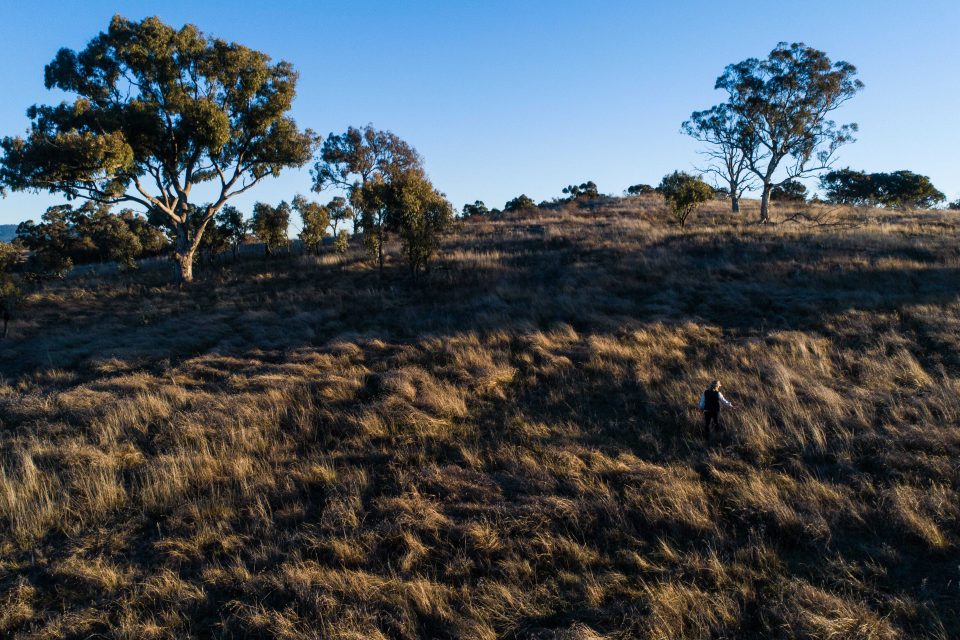




Part of the 1421 hectares protected after the most recent tender round is Marty and Liz Timmins’ 850-hectare property, halfway between Jindabyne and Berridale.
“Originally, we had three neighbours, all with the same surname. Now there’s about 35 with the splitting up of 100-acre farmland and lifestyle blocks,” says Marty.
“We were particularly interested in retaining those native pastures that have been there since first settlement.”
For 42 years, the Timmins have been running merino sheep and some Angus cattle on the land, which Liz’s father purchased a section of in the mid-80s. Over time, they improved 50 per cent of the pasture but noticed it would end up bare and dusty, particularly during a drought. However, the native pastures would still have a cover of grass and tussock, perfect for retaining the soil.
The Timmins now have one block under a 20-year conservation agreement. It can be grazed four weeks of the year at certain times, but they also have a section under permanent protection, which can never be grazed, split up or developed.
“After getting the OK for a block, you put in a tender with what you’re willing to accept every year in monetary compensation for locking it up, which is entirely up to you to decide,” Marty says.
“You’re not getting any guidance on that, which is fair, and we’re quite happy with the arrangement.
“The other good thing is that when we next go into a roaring drought, that income will help us stock the rest of the place and know that we’ll have something for the year regardless of the season’s success.”
Two tenders have been run in Monaro, the first in 2018 for native grasslands, but there are no plans for the region to have another in the next four years.
Tobi from the BCT says they also have a revolving fund for properties outside their priority investment areas.
“It’s open to anyone with 20 hectares or more of moderate to good land with snow gum woodlands or native grasslands, and we’re also targeting koala habitat for our partner protection agreement.”






